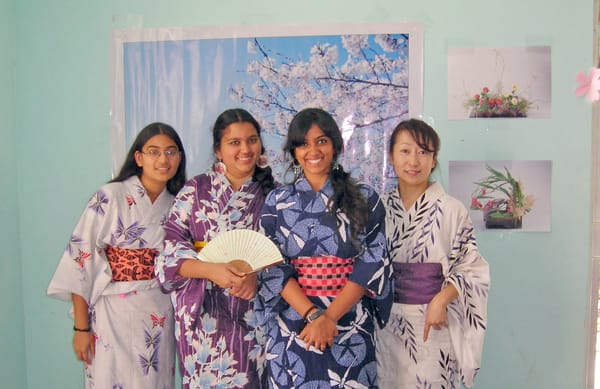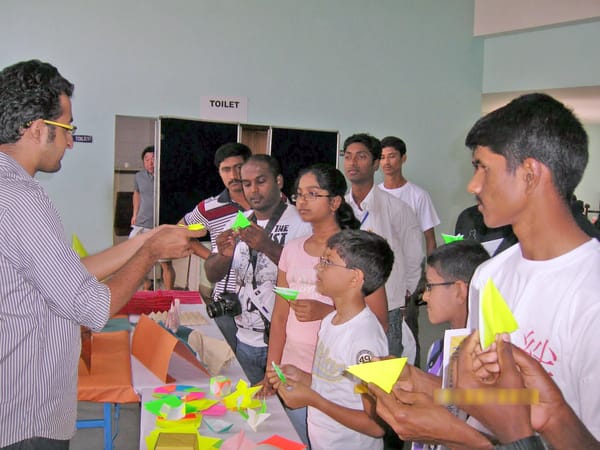For most of us, the first thoughts on Japan would be fast cars, sushi and karate. These facets are complemented by the elaborate culture of the country. The Japan Habba 2012 showcased many such cultural and popular features of Japan.
Over one thousand visitors attended the Indo- Japan cultural exchange programme at the Jnana Jyoti Auditorium, Central College. Aptly named "Kizuna" which means camaraderie, this festival aims for Japanese in Bangalore to learn about India and similarly for Bangaloreans to get a better glimpse of Japanese culture.
Toward late afternoon, the auditorium reverberated with popular Indian songs, only difference was that the performers were Japanese.

Kimono draping was a huge draw at the Habba. Pic: Deepthi Sarma
Yasu yo, a homemaker from Cooke Town was one of the performers. Yasu, who has been in Bangalore for over a year now says that the weather and people of Bangalore warm her heart the most. Agrees Kei ko, another homemaker who has been in Bangalore for almost two years that the city weather is a big bonus. They came to Bangalore when their husbands moved here for jobs.
The Habba has been an annual event since 2005. It is being organised by Bangalore Nihongo Kyooshi-kai(BNK) a leading provider of Japanese, Coaching, Training & Workshops in Bangalore, Consulate of Japan in Bangalore, Bangalore university and Bangalore Japanese association.
Colorful origami lanterns and hangings adorned the entire venue and cheerful Japanese women dressed in traditional silk kimonos brightened up the event. The stalls had origami art collections, Ikebana schools, Japanese learning school and some Indian stalls.
The blend of Indians with Japanese was so seamless that I started looking out for similarities between the two cultures.
Kimono draping was a big draw for the women. Gayatri Bhaskar, a final year student from Christ college, enjoyed the kimono draping process. She was happy to learn that there were varieties of kimonos depending on the occasion, season and age group., Gayatri tried on the summer kimono, made of lighter material for younger generation and is more fashionable.

Children learned to make simple objects using origami technique. Pic: Deepthi Sarma
Children enjoyed creating butterflies, flowers and other such articles from colourful paper in the origami stalls. These stalls drew most of the visitors.
The traditional tea ceremony was definitely another aspect of Japanese culture to look out for. Beautifully performed by Norie Ohga Manikath and her team, this ceremony is very famous also in Norie’s residence where she invites her friends over for an occasional taste of Japan.
Norie has been in Bangalore for over 30 years. She feels Bangalore has grown from being a quiet, cold, not so many cars city to a crowded city. What she appreciates though is the people who celebrate all cultures with great interest. "Even a city boy or a city girl is rooted and traditional like us" quips Norie. She is a representative at International children’s village, Happy Valley and stays in diamond district.
Soni Kshatriya who is a Japanese translator by profession believes that such events are also important for globalisation today. Adds Rucha Wad, an engineer "I did not know so many Japanese people lived in Bangalore. This kind of event gives an opportunity to meet local artistes who excel at Japanese art forms". ⊕